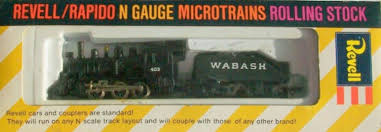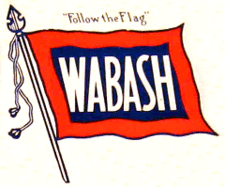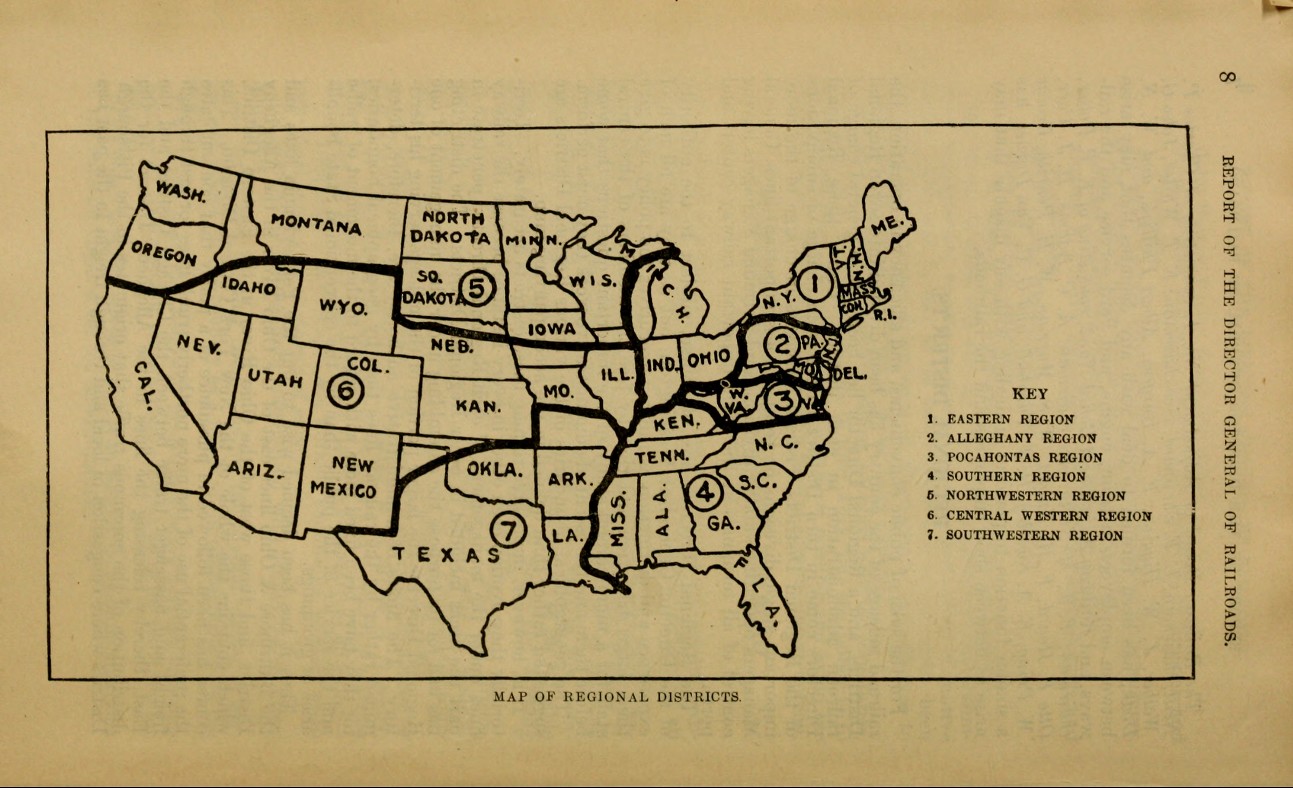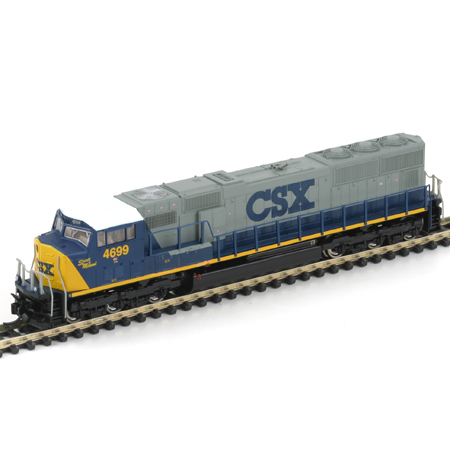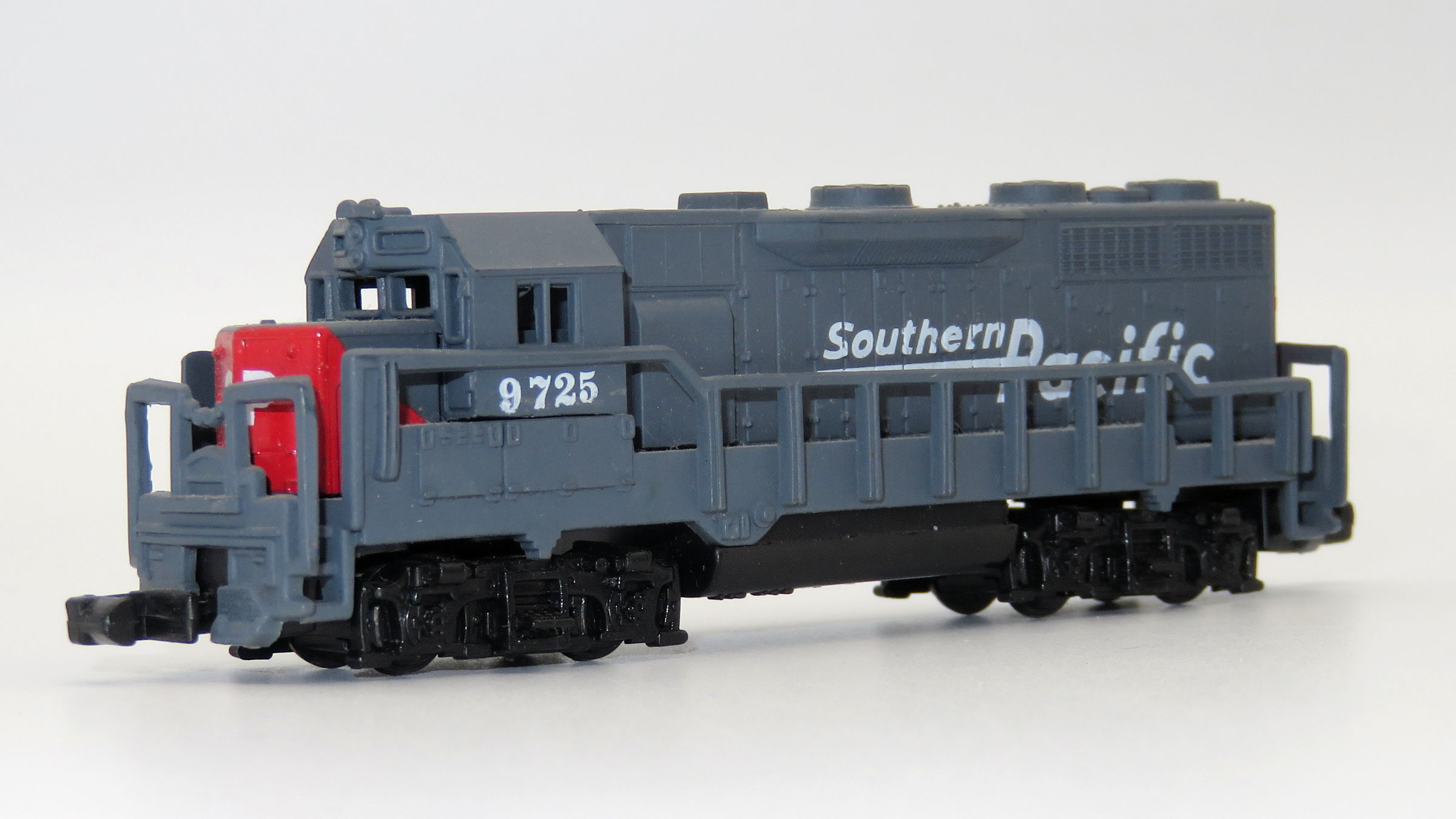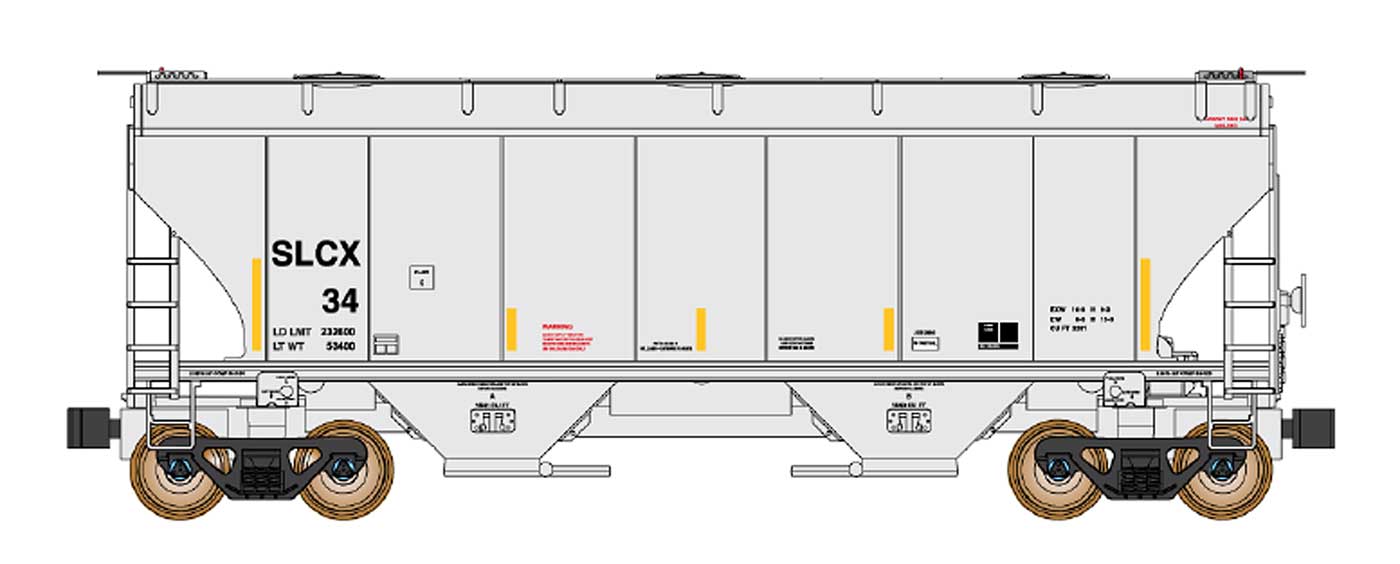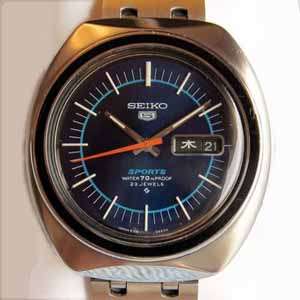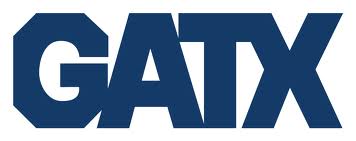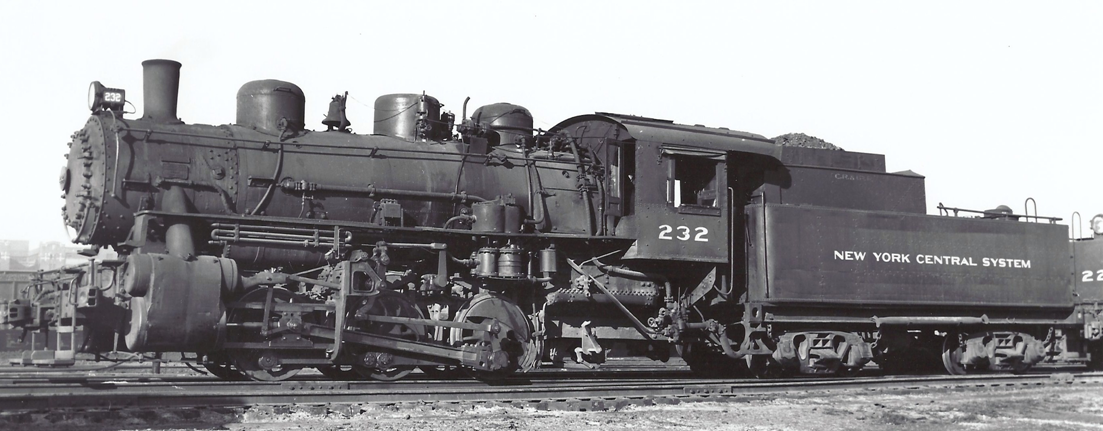Revell - 2342 - Locomotive, Steam, 0-6-0 USRA - Wabash - 403
| Stock Number | 2342 |
| Brand | Revell |
| Manufacturer | Arnold Rapido |
| Body Style | Arnold Rapido Steam Engine 0-6-0 |
| Prototype Vehicle | Locomotive, Steam, 0-6-0 USRA (Details) |
| Road or Company Name | Wabash (Details) |
| Road or Reporting Number | 403 |
| Paint Color(s) | Black |
| Print Color(s) | White |
| Coupler Type | Rapido Hook |
| Coupler Mount | Truck-Mount |
| Wheel Type | Nickel-Silver Plated Metal |
| Wheel Profile | Standard |
| Ready-to-Run | No |
| DCC Readiness | No |
| Item Category | Locomotives |
| Model Type | Steam |
| Model Subtype | 0-6-0 |
| Model Variety | Tender |
| Prototype Region | North America |
| Prototype Era | NA Era II: Late Steam (1901 - 1938) |
Model Information:
Arnold Rapido introduced 3 types of 0-6-0 steam locomotives for the US market circa 1967-68. They all share the same mechanism.
- 0225: "Tank Switcher", is actually a german class BR 80.
- 0226: "Old Timer" with a wide smokestack and a cowcatcher pilot.
- 0227: "Switcher" with a narrow smokestack and an unusual coupler in the front.
The last two share the same tender.
- 0225: "Tank Switcher", is actually a german class BR 80.
- 0226: "Old Timer" with a wide smokestack and a cowcatcher pilot.
- 0227: "Switcher" with a narrow smokestack and an unusual coupler in the front.
The last two share the same tender.
Prototype History:
The USRA 0-6-0 was a USRA standard class of steam locomotive designed under the control of the United States Railroad Administration, the nationalized railroad system in the United States during World War I. This was the standard light switcher of the USRA types, and was of 0-6-0 wheel arrangement in the Whyte notation, or "C" in UIC classification.
A total of 255 locomotives were built under USRA control; these were sent to various railroads. After the dissolution of the USRA, the Atlantic Coast Line, Chicago, Burlington and Quincy, Chicago, St. Paul, Minneapolis and Omaha Railway, Gulf, Mobile and Ohio Railroad and Texas and Pacific Railway ordered additional copies of the USRA 0-6-0 design, while the Missouri Pacific Railroad and the Wheeling and Lake Erie Railway ordered only copies.
From Wikipedia
A total of 255 locomotives were built under USRA control; these were sent to various railroads. After the dissolution of the USRA, the Atlantic Coast Line, Chicago, Burlington and Quincy, Chicago, St. Paul, Minneapolis and Omaha Railway, Gulf, Mobile and Ohio Railroad and Texas and Pacific Railway ordered additional copies of the USRA 0-6-0 design, while the Missouri Pacific Railroad and the Wheeling and Lake Erie Railway ordered only copies.
From Wikipedia
Road Name History:
Wabash was the product of an 1889 restructuring (under the leadership of Jay Gould) of several railroads centered around the Wabash St. Louis & Pacific. Wabash was unusual in that it evenly straddled the border between “eastern railroads” and railroads west of the Chicago-St.Louis-Memphis-New Orleans border. In the west, Wabash connected Kansas City, Omaha and Des Moines. Heading east from those points, Wabash reached St. Louis, Decatur, and Chicago. Then, clearly in the eastern territory, Wabash reached Fort Wayne, Detroit, Toledo and finally Buffalo. Total length was about 2500 miles. The Detroit to Buffalo line cut though southern Ontario, Canada on Canadian National trackage rights. That route also required a car float operation across the Detroit River. As a result, Wabash’s Buffalo traffic was a fraction of that of competitors Nickel Plate and New York Central. However, Wabash’s Detroit-Kansas City and Detroit-St. Louis service was a force to be reckoned with and well patronized by Michigan’s automakers. The Wabash Cannonball was the name of the daytime passenger run between Detroit and St. Louis. The song of the same name was a hit long before it was ever applied to the train itself. Wabash bought control of the Ann Arbor in 1925 and soon after, Wabash and Delaware & Hudson jointly bought control of the Lehigh Valley (Wabash’s principle connection in Buffalo.) This got the attention of the Pennsylvania Railroad who bought control of Wabash under the auspices of their “Pennsylvania Company” subsidiary in 1928.
As PRR planned their merger with New York Central, it became obvious that they could not take Wabash with them. The first step was to transfer control of Ann Arbor from Wabash to Detroit Toledo & Ironton (also in the Pennsylvania Company family.) Up to that point, Ann Arbor was routinely included in the official Wabash system map. Then PRR arranged for Wabash to be included in the Norfolk & Western-Nickel Plate-Pittsburgh & West Virginia merger that was being planned. PRR didn’t overtly control the N&W but they did have considerable influence over them. The deal was made and the new, larger Norfolk & Western leased the Wabash for 50 years in October of 1964. At that point, Wabash became a paper railroad. They were finally merged out of existence by N&W successor Norfolk Southern in the 1990s.
As PRR planned their merger with New York Central, it became obvious that they could not take Wabash with them. The first step was to transfer control of Ann Arbor from Wabash to Detroit Toledo & Ironton (also in the Pennsylvania Company family.) Up to that point, Ann Arbor was routinely included in the official Wabash system map. Then PRR arranged for Wabash to be included in the Norfolk & Western-Nickel Plate-Pittsburgh & West Virginia merger that was being planned. PRR didn’t overtly control the N&W but they did have considerable influence over them. The deal was made and the new, larger Norfolk & Western leased the Wabash for 50 years in October of 1964. At that point, Wabash became a paper railroad. They were finally merged out of existence by N&W successor Norfolk Southern in the 1990s.
Brand/Importer Information:
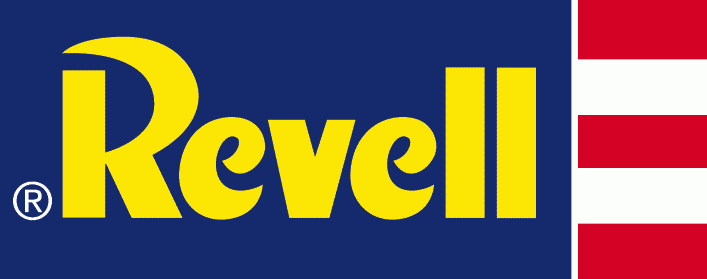 Revell was Arnold’s importer in the 60s.
Revell was Arnold’s importer in the 60s.
Starting in 1967, Arnold and Revell, Inc. of Venice, California entered into a distribution relationship. These new trains would be called MicroTRAINs. The first catalog, dated 1967, shows first generation Arnold rapido F-units on the cover.
More on this site.

Starting in 1967, Arnold and Revell, Inc. of Venice, California entered into a distribution relationship. These new trains would be called MicroTRAINs. The first catalog, dated 1967, shows first generation Arnold rapido F-units on the cover.
Item created by: CNW400
on 2019-05-30 14:20:30
Last edited by: CNW400 on 2020-08-11 14:40:14
If you see errors or missing data in this entry, please feel free to log in and edit it. Anyone with a Gmail account can log in instantly.
Last edited by: CNW400 on 2020-08-11 14:40:14
If you see errors or missing data in this entry, please feel free to log in and edit it. Anyone with a Gmail account can log in instantly.


